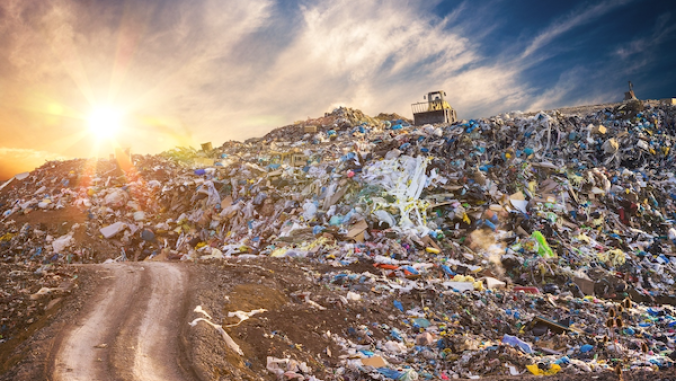What artificial intelligence means for sustainability

It’s hard to open a newspaper these days without encountering an article on the arrival of artificial intelligence. Predictions about the potential of this new technology are everywhere.
Media hype aside, real evidence shows that artificial intelligence (AI) already drives a major shift in the global economy. You now use it in your day-to-day life, as you look to Netflix to recommend your next binge or ask Alexa to play music in your home. And the benefits of AI are driving the technologies into every corner of the global economy. Look, for example, at the number of times the largest U.S. companies mention artificial intelligence in their 10-K filings. (See chart below, which measures mentions of "artificial intelligence" and related worlds in 10-K filings of S&P companies, from 2011 to 2016.)

For all of the debate about the dawn of artificial intelligence, there is little talk about what AI means for sustainability.
Will AI mean a massive technological boost to sustainability priorities? Or will the rapid changes associated with AI give us a net negative sustainability outcome? By mining the narrative disclosures that companies make about their CSR activities, we can derive some insights into how AI is transforming corporate sustainability activity. Using keyword searches in ESG Trends, a dataset of corporate sustainability disclosures, we looked across thousands of CSR reports and CDP disclosures from large, global companies to see what, if anything, companies are disclosing about the impact of artificial intelligence. This analysis below, which measures mentions of AI in corporate sustainability reports and CDP filings, can help us start to answer the question: What does AI mean for sustainability?

What we see is that AI is already having an impact on corporate sustainability activity. Companies already are making use of AI to achieve step changes in, for example, efficiency and emissions reductions, and to innovate new products and services. These AI applications for sustainability are not widespread, and they are early stage, but the data suggests that AI can bring significant benefits for sustainability in the medium term. What we don’t see, however, is much evidence that companies are understanding the numerous and serious risks that AI presents.
AI unlocks opportunities for major sustainability progress
The vast majority of the mentions of artificial intelligence in CSR reports and CDP filings relate to how AI presents opportunities for companies. AI is helping the next generation of companies reduce their environmental and social impact by improving efficiency and developing new products.
We can look first at utility company Xcel Energy. When the company creates electricity from burning coal at its two plants in Texas, one major byproduct is a potent greenhouse gas called nitrous oxide. Nitrous oxide emissions contribute to climate change, as well as harming the ozone layer.
Recently, the company has received a little extra help in reducing its emissions from artificial intelligence. Xcel has equipped its smokestacks in Texas with neural networks, an advanced artificial intelligence that simulates a human brain. The neural network quickly can analyze the data that results from the complex dynamics of coal combustion. It then can make highly accurate recommendations about how to adjust the plant’s operations to reduce nitrous oxide emissions and operate at peak efficiency. Neural networks have helped Xcel Energy — and over a hundred other companies around the world — reduce their nitrous oxide emissions. A report from the International Energy Agency estimated that artificial intelligence control systems such as Xcel Energy’s neural networks could reduce nitrous oxide emissions by 20 percent.
AI applications for sustainability are early stage, but the data suggests they can bring significant benefits in the medium term.
Another example is Google. The search giant recently hit a wall in improving data center efficiency. The company had optimized its data center energy use to a point where engineers felt it could not be improved much more. Then one of its engineers had an idea to deploy a machine learning model developed for another application to assist in optimizing efficiency in its data centers.
Google deployed the artificial model to "learn" when and why certain processes occurred in the data center. Based on this data, Google’s algorithms were able to identify options for significant additional savings. Google’s application of AI has helped to reduce the amount of energy used for cooling data centers by 40 percent — good for the company’s bottom line, and good for the planet.
Artificial intelligence is also enabling companies to develop new products and services that were unthinkable just a few years ago. In some of these cases, companies are deploying artificial intelligence directly to help them make progress on tough environmental and social challenges.
IBM, for example, is using its artificial intelligence expertise to improve weather forecasting and renewable energy predictions. The system, known as SMT, "uses machine learning, big data and analytics to continuously analyze, learn from and improve solar forecasts derived from a large number of weather models." Through the application of artificial intelligence and "cognitive computing," IBM can generate demand forecasts that are 30 percent more accurate. This type of forecasting can help utilities with large renewable installations better manage their energy load, maximize renewable energy production and reduce greenhouse gas emissions.
One of the best-known examples of artificial intelligence in action is in autonomous vehicles. Cars that drive themselves may offer a promising sustainability future: currently one-quarter of U.S. greenhouse gas emissions come from transportation. Machines will be more efficient at driving than humans. Engines in machine-driven cars can be smaller, using less gasoline. And autonomous vehicles can platoon together just inches from one another, improving efficiency and leaving more space on the road for cyclists, public transport or pedestrians. Google, Uber, Tesla, Ford, Nissan and other companies are working hard to develop self-driving cars.
It is not just tech companies that see report sustainability-related opportunities from AI. Interserve, for example, a FTSE-listed construction company, builds and manages sensitive facilities, including schools, hospitals and clinical facilities, where operational safety is critical. The company uses real-time data to alert personnel when dangerous, waterborne pathogens such as Legionnaire’s bacteria develop. The company reported that it is exploring artificial intelligence to predict when these diseases will occur so it can fix issues before they develop, increasing safety and saving on maintenance costs.
Interserve’s work, alongside that of Xcel Energy, Google, IBM and other companies, shows that AI has the potential to provide a major technological boost to help companies achieve sustainability goals.
However, AI applications for sustainability are in their infancy. Only a small percentage of the thousands of companies we analyzed mention artificial intelligence at all in their CSR disclosures. And as AI scales to create more sustainability opportunity, companies also will have to navigate the risks.
AI introduces new material, sustainability risks
Judging from their official disclosures, companies are eager to embrace the opportunities presented by AI. They also appear remarkably unconcerned about the risks. In a review of more than 8,000 CSR reports and CDP disclosures over the last two years, we failed to find more than a handful of mentions of the risks to companies that AI poses.
One sustainability-related risk that AI poses is automated bias. Bias can happen when the machine learns to identify patterns in data and make recommendations based on, for example, race, gender or age. As AI algorithms do more analysis, companies must be diligent in ensuring that their algorithms analyze data and make predictions in a fair way.
One sustainability-related risk that AI poses is automated bias.
For example, credit scoring companies such as TransUnion use artificial intelligence to analyze a variety of data points to determine credit worthiness. Undiagnosed bias in such algorithms could lead to poor credit scores for groups of people based in part on gender or race, which is expressly prohibited by law and could expose the company to legal claims. What is a company’s policy toward algorithmic decisions? Are the company’s algorithms certified by a third-party to be bias-free? These are essential questions that companies should begin assessing and disclosing now.
Another risk from AI is that the sustainability benefits that companies tout — such as major efficiency breakthroughs and clean, self-driving cars — may not materialize, or may be offset by other consequences of AI.
For example, some studies suggest that the environmental benefits from self-driving cars may turn out to be mixed at best. Machines driving our cars, for example, may lead to people making more trips, which could lead to increases in emissions, not decreases.
Another major risk for the planet is that large-scale implementation of artificial intelligence may eat all of our jobs, leading to widespread unemployment. A recent report estimated that automation will replace 6 percent of U.S. jobs by 2021, with further job reductions coming in the medium term. A world without jobs presents a host of new, uncharted challenges for sustainability, few of which we can predict.
Artificial intelligence is already here. It will continue to gain in complexity and sophistication. It presents excellent opportunities for efficiencies and innovation, many of which were unthinkable just a few years ago.
Many of these innovations will allow us to make significant progress on the most difficult environmental and social problems facing humans. At the same time, these same efficiencies and innovations bring with them new risks, such as automated bias and large-scale job losses. More companies quickly must come to grips with both the sustainability opportunities and risks that AI brings.





